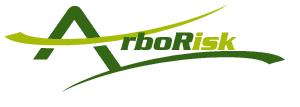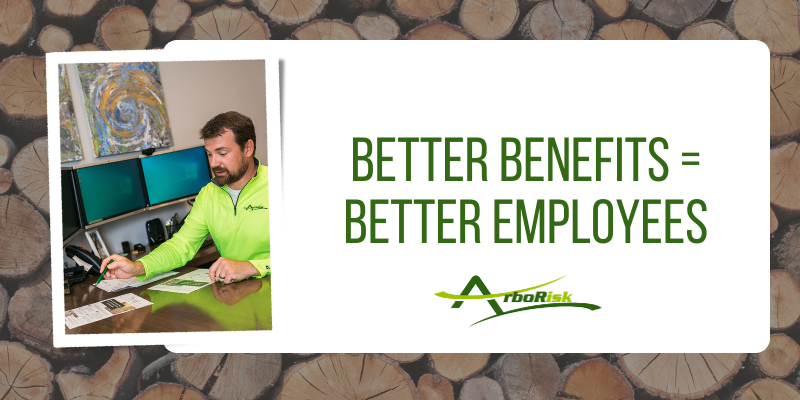Employees in Other States
Employees in Other States
Written by Eric Petersen, CIC
There is an increasing trend within the tree care industry for tree services to either be working in other states or hiring remote employees that live in a different state than where they are headquartered. Many times this offers a greater revenue potential or the ability to get the talent on their team that they need to be successful. In fact, for ArboRisk it’s both. We now have employees that live and work in three different states as our insurance agency’s home office. That has allowed us to expand our brand and secure top tier employees that would not have been an option if we were only looking within our home state.
But with that opportunity, comes some employee management challenges as every state operates slightly different from each other. There are many different issues you as the business owner must address to do this correctly, from payroll tax and unemployment accounts, sales tax, workers compensation, contractual law and other employment laws, the list of to do’s can get lengthy right off the bat. Your insurance agent, accountant, and attorney should be the first three calls you make to determine what you will need to take care of.
For this article, I am going to focus on the insurance issues with out of state work or employees.
The first thing you must do is assess how much time your employees will be spending in each state. Are you looking to have a full time remote employee or crew? Does the employee live in the other state and commute across state lines to work out of your shop? Or is there a new project that you want to take on? Perhaps it’s storm work where locations will be changing frequently? The specifics of your situation could drastically change the requirements of what you need to do. I’ve broken it down into two scenarios; Regular Work/Permanent Location or Temporary Work/Location to help you determine what to consider.
Regular Work/Permanent Location
If you are planning on having regular work or employees permanently stationed in another state it is a little easier to comply with. Let’s look at each coverage line to see what you should be concerned with.
Workers’ Compensation – Because each state handles Work Comp and has different laws with different benefit schedules, you need to make sure to add the other state to your Work Comp policy and assign an estimated payroll for each applicable Work Comp class code. This also applies if you have an employee living in another state, even if they only work in your state. You want to make sure there is coverage for any state that the employee could file for benefits under. If you happen to open a location up in North Dakota, Ohio, Washington or Wyoming, you’ll have to buy a Work Comp policy from that particular state directly.
General Liability – As long as you are working within the United States, Puerto Rico, US Territories and Canada, your General Liability will cover you. That said, you should report all new locations to your General Liability policy as some insurance companies are not licensed to do business in all states. This means they are not equipped to handle claims that pop up in those states and if they learn of regular operations happening in a state they are not licensed in, they will issue a non-renewal as soon as they can. Like we’ve discussed in many other business tips, it’s much better to build a relationship with your insurance company and be open about the states you are working in than to try to sneak it past them.
Property & Inland Marine – Your Property policy only covers you at listed locations, so if you have a building or a leased location in another state, add that location to your insurance policy. Inland Marine coverage acts like the General Liability and covers your equipment wherever you go as long as you are in the coverage territory.
Business Auto – If your vehicles are registered or garaged in a different state than your company’s headquarters, you’ll need to make sure your insurance company knows that as you may be subject to different motor vehicle laws in the other state and need to have different insurance coverages on your policy.
Temporary Work/Location
Workers’ Compensation – Each state has its own definition of what constitutes temporary work. For some states, like New York, the moment your employees step into the state to work you are subject to the Work Comp laws of their state, while in other states, you are allowed up to 90 consecutive days before their laws become your company’s responsibility. Check with your insurance agent to understand the particular Work Comp laws for the state(s) you will be temporarily working in.
General Liability – The insurance guideline for temporary work when it relates to General Liability coverage is the same as regular work. Check with your insurance company to make sure they are able to provide the best claims service if you were to have a General Liability claim in another state. Have as many details about the temporary work as possible to give the insurance company the full picture of what you will be doing in the other state and why you want or need to take on this project. Again, by building a relationship with your insurance company, you will benefit much more long term than you would from hiding information from them.
Property & Inland Marine – If your temporary work involves a written or verbal lease agreement to rent a building, storage shed, parking lot, etc., you want to list that location on the property policy immediately. If your equipment is stored temporarily out of state, again, this is a time for a conversation with your insurance company to make sure there won’t be any trouble with a future renewal policy by being open with them. In your conversation with the insurance company, explain as much about the temporary work as possible.
Business Auto – When thinking about the temporary out of state exposure for your business vehicles, think about where you are ultimately physically working and garaging the vehicles during the length of the project. All insurance companies understand and accept the fact that you may be driving through various states on your way to a job, so there will not be a limitation of coverage, however, it is important to remember that each state may have different laws for motor vehicle accidents so you could be unintentionally exposing your company to a larger lawsuit if there is an accident.
As you can see, working in a different state other than your home state can cause some potentially large insurance issues for your tree care company. The best way to ensure your company is properly protected is to talk with your insurance agent and gain the approval of your insurance company before you accept work in another state. Creating an open dialogue between you and your insurance company on your operations is the first step in avoiding a costly and stressful non-renewal situation.
If you have any questions about out of state work, please contact an ArboRisk team member today.




Recent Comments